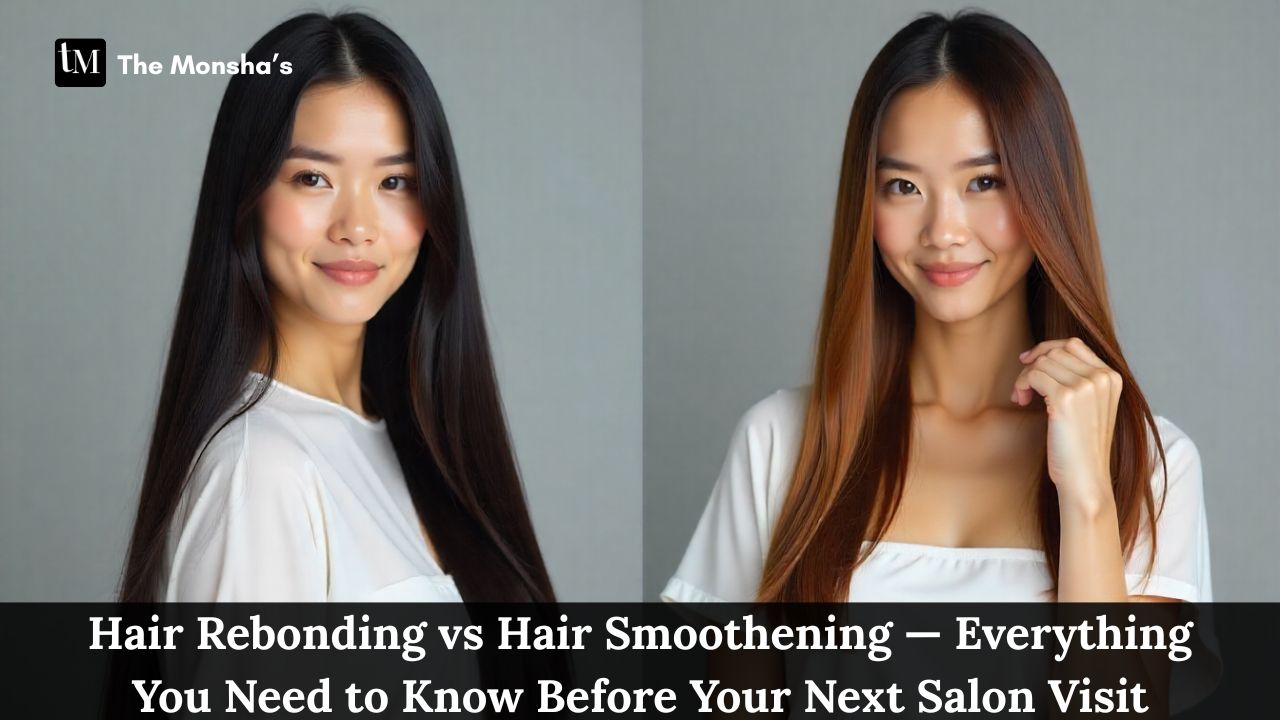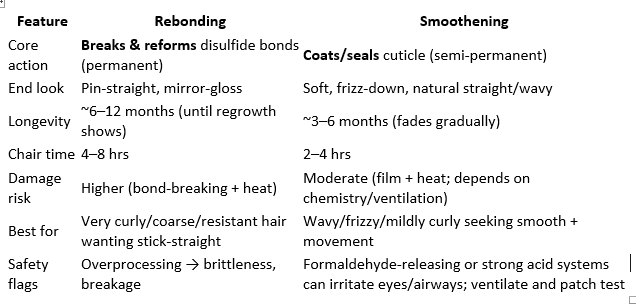
I’ve logged more salon hours than internet asks if I’m still watching. I’ve sat through steamy blowers, chemical clouds, and the “no washing, no tying, no tucking” commandments. If you’re torn between rebonding and smoothening, here’s your no-nonsense, research-laced guide—what they are, how they work, the risks nobody tells you about, and how real people feel about them.
Short answer: a permanent chemical restructuring that breaks your hair’s internal disulfide bonds and reforms them straight. The result is poker-straight, glossy hair—until new growth comes in.
Why it works (science bit): these systems alter the hair’s disulfide bonds—the architecture that decides curl vs straight. Once you change them, they stay changed. (Cue visible line of demarcation when your roots grow in.) (jaadreviews.org)
Reality check: Rebonding is effective, but it’s the heavier chemical lift and may reduce tensile strength versus virgin hair (translation: hair can get drier/more brittle, especially if you stack color + heat).
Short answer: a semi-permanent treatment that coats and seals the cuticle to relax frizz and make waves hang smoother. Think “polished and soft,” not pin-straight.
Typical flow:
Key difference: smoothening doesn’t rebuild bonds; it lays a film that smooths the surface. You’ll likely keep some natural bend/volume vs the stick-straight look of rebonding. (iDiva)
Important safety note (2024–2025): The FDA has warned that certain hair-smoothing products release formaldehyde when heat is applied—causing burning eyes, breathing trouble, and even nerve-related issues. A proposed ban is in discussion but hasn’t passed yet, with advocates and lawmakers pushing for action. And don’t let “formaldehyde-free” labels fool you—newer versions with glyoxylic acid have also triggered health problems in salons without proper airflow. Always double-check what’s in the product and how ventilated the space is before you commit. (U.S. Food and Drug Administration)

(Science & safety sources: dermatology reviews on relaxers/thioglycolates; FDA and state documents on formaldehyde; pro/consumer explainers.) (jaadreviews.org)
(Strength/damage data trends from hair-shaft studies.) (PMC)
Smoothening — Pros
Typical India pricing (ballpark):
Maintenance (both):
Good fits:
(Technique and aftercare often decide whether results “last” more than the product itself—common complaint in user threads.)
Will smoothening make my curls pin-straight?
No—it relaxes and polishes. You’ll keep some movement.
Is rebonding safe on colored hair?
Stacking chemicals raises the dryness/breakage risk. Space services out and pre-treat with bond-builders; patch-test a strand.
Are “formaldehyde-free” treatments risk-free?
Not necessarily. Some rely on glyoxylic acid, which still demands ventilation and can have adverse effects. Ask for SDS (safety data sheet).
How often should I repeat?
Rebonding: 8–12 months (touch-up roots). Smoothening: ~3–6 months.
If your hair is coarse, very curly, and resistant—and you want the glass-sheet look—rebonding still delivers. Just respect the chemistry and commit to serious aftercare. If you’re chasing frizz control, a silky, natural finish, and fewer chemical fireworks, go smoothening—but get receipts on the formula, ventilation, and pro credentials.
I love good hair days as much as the next person, but I love healthy lungs and edges more. Ask what’s in the bottle. Demand ventilation. Book with techs who can explain their chemistry without blinking. That’s how you get smooth hair and keep your scalp and stylist alive to tell the tale.